Nordmarianen |
|
|
|
| Übersicht – Contents: | |
Nordmarianen |
|
|
|
| Übersicht – Contents: | |
Flagge – Flag: |
|
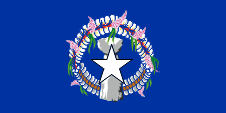 |
Nationalflagge – national flag, Seitenverhältnis – ratio = 1:2 (20:39), Quelle/Source, nach/by: Wikipedia (EN), commons.wikimedia.org   |
historische Flaggen – historical Flags: |
|
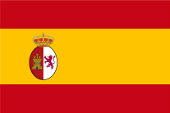 |
1785–1899, Flagge von Spanien – flag of Spain, Quelle/Source, nach/by: Flags of the World |
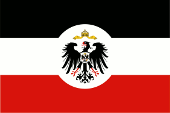 |
1899–1914, Deutsches Reich – German Empire, Dienstflagge Kolonialamt – official flag of Colonial Office, Seitenverhältnis – ratio = 2:3, Quelle/Source, nach/by: Wikipedia (DE)    |
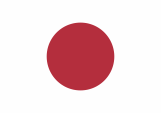 |
1914–1944, Flagge Japans – flag of Japan, Seitenverhältnis – ratio = 7:10, Quelle/Source, nach/by: Wikipedia (EN) |
 |
seit/since 1944, Flagge der USA – flag of USA, Seitenverhältnis – ratio = 10:19, Quelle/Source, nach/by: Wikipedia (DE) |
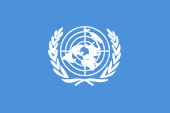 |
1947–1965,   |
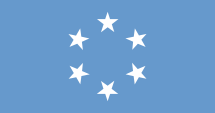 |
1965–1972, UN-Teuhandgebiet – UN Trust Territory, Flagge der Pazifischen Inseln – flag of the Pacific Islands, Seitenverhältnis – ratio = 10:19 Quelle/Source, nach/by: Flags of the World |
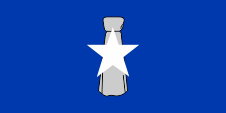 |
1972–1989, Nationalflagge – national flag, Seitenverhältnis – ratio = 1:2 (20:39), Quelle/Source, nach/by: Wikipedia (EN), Orange Tuesday, Public domain, via Wikimedia Commons |
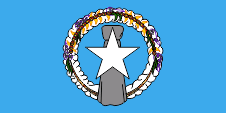 |
1989–1991, Nationalflagge – national flag, Seitenverhältnis – ratio = 1:2 (20:39), Quelle/Source, nach/by: World Statesmen, Wikipedia (EN), commons.wikimedia.org |
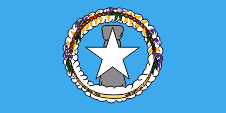 |
1991–1995, Nationalflagge – national flag, Seitenverhältnis – ratio = 1:2 (20:39), Quelle/Source, nach/by: World Statesmen, using commons.wikimedia.org |
| Die erste eigene Landesflagge wurde für lokale Zwecke im Jahre 1972 geschaffen. Sie war einfarbig Blau und zeigte einen weißen Stern vor einem Latte-Stein. Das Seitenverhältnis beträgt 20:39, in der Praxis 1:2. Das Blau steht für den Pazifik und den Marianengraben, der Stern für die Nördlichen Marianen, aber auch für die USA und der Latte-Stein für die Chamorros. Latte-Steine, heute ein Zeichen der Chamorro-Identität, wurden von den Chamorro – Ureinwohner der Marianen – als Fundamentsteine für ihre Häuser verwendet. Der Farbton der Farbe Blau ist bis heute nicht definiert, er fiel und fällt recht unterschiedlich aus, auch nach dem 4. Juli 1976, als die Flagge offiziell zugelassen wurde. Vor Ämtern und Behörden muss zusätzlich die Flagge der USA gehisst werden. 1985 wurde die Flagge erneut bestätigt, jetzt per Verfassung und im Jahre 1989 im Aussehen etwas verändert: Das Blau der Flagge wurde heller und in der Mitte wurde noch ein dekorativer Kranz as Blüten und Muscheln (Mwarmwar) ergänzt. Er steht für die Volksgruppe der Karoliner. Zwischen 1991 bis 1995 war der Kranz über dem Latte-Stein platziert. Seit 1995 wird die Flagge einen dunkleren Blauton wiedergegeben und auch Kranz und Stein wurden wahrscheinlich noch graphisch mehr verfeinert. Die Flagge des UN-Treuhandgebiets "Pazifische Inseln" war ebenfalls einfarbig blau. Sie zeigte sechs Sterne. Diese standen für Palau, Yap, Truk, Ponape, die Marshallinseln und die Marianen. |
The first own national
flag was created for local purposes in 1972. It was solid blue and featured
a white star in front of a latte stone. The side ratio is 20:39, in practice
1:2. The blue stands for the Pacific Ocean and the Mariana Trench, the star
for the Northern Mariana Islands, but also for the USA, and the latte stone
for the Chamorros. Latte stones, today a sign of Chamorro identity, were
used by the Chamorro – indigenous people of the Marianas – as foundation
stones for their houses. The shade of the colour blue has not been defined
to this day; it was and still is quite different, even after 4th of July in
1976, when the flag was officially approved. In front of offices and
authorities, the flag of the USA must also be hoisted. In 1985, the flag was reaffirmed, now by constitution, and its appearance was changed somewhat in 1989: The blue of the flag became lighter and a decorative wreath of flowers and shells (Mwarmwar) was added in the middle. It represents the Carolinian ethnic group. Between 1991 and 1995, the wreath was placed above the latte stone. Since 1995, the flag id displayed in a darker shade of blue and the wreath and stone have probably also been more graphically refined. The flag of the UN Trust Territory "Pacific Islands" was also solid blue. It showed six stars. These stood for Palau, Yap, Truk, Ponape, the Marshall Islands and the Marianas. |
| Quelle/Source: 1.) Wikipedia (D), 2.) Wikipedia (EN) | |
Wappen – Coat of Arms: |
|
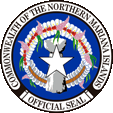 |
Siegel der Nordmarianen – seal of the Northern Mariana Islands, Quelle/Source: CoA: File:Flag of the Northern Mariana Islands.svg (Open Clip Art Library)User:Connormah, Public domain, via Wikimedia Commons |
|
|
|
| Die Nordmarianen verwenden ein Siegel. Wann es in Dienst gestellt wurde ist unbekannt. Es zeigt das Bild der Flagge, umgeben mit einer Inschrift. Diese zeigt im oberen Teil den Namen des Landes: "Commonwealth of the Northern Mariana Islands". | The Northern Marians use a seal. It is unknown when it was put into service. It displays the image of the flag surrounded by an inscription. That shows the name of the country in the upper part: "Commonwealth of the Northern Mariana Islands". |
| Quelle/Source: Volker Preuß | |
|
|
|
Landkarte – Map: |
Lage – Position: |
Landkarte des Landes – Map of the Country: |
|
|
| Zahlen und Fakten – Numbers and Facts: | |
|
|
|
|
|
|
|
|
|
|
|
|
|
|
|
|
|
|
| ca. 1500
v.Chr. · erste Besiedlung der Inseln 1521 · Entdeckung durch den portugiesischen Seefahrer Fernão de Magalhães 1565 · der spanische Seefahrer Urdaneta erkundet die Marianen 1686 · die Marianen werden spanischer Besitz, spanische Kolonisierung 1898 · Spanien verkauft die Insel Guam an die USA 1899 · Spanien verkauft die restlichen Marianen-Inseln an das Deutsche Reich 1914 · Erster Weltkrieg (1914–1918), Besetzung durch japanische Truppen 1920 · Versailler Diktat, das Deutsche Reich verliert alle seine Kolonien, die Marianen-Inseln werden – zusammen mit den anderen deutschen Besitzungen (Marshall-Inseln und Karolinen-Inseln) in Mikronesien – offiziell als "Pazifische Inseln" ein Mandatsgebiet des Völkerbundes unter japanischem Mandat 1944 · Zweiter Weltkrieg (1939–1945), Besetzung durch US-amerikanische Truppen 1945 · die Marianen werden offiziell an die USA übergeben 1947 · Bildung des UNO-Treuhandgebiets der "Pazifischen Inseln" (Marianen, Marshall-Inseln, Karolinen) unter US-amerikanischer Verwaltung 1965 · Einrichtung einer eigenen gesetzgebenden Versammlung für die Pazifischen Inseln 1978 · Referendum für die Bildung der Föderierten Staaten von Mikronesien nach dem Ende der US-Verwaltung auf den Pazifischen Inseln, aber die Marianen-Inseln verlassen den Verband der Pazifischen Inseln und werden ein mit den USA assoziierter Staat mit dem Namen Nordmarianen 1986 · Die Nordmarianen lehnen in einer Volksabstimmung die Unabhängigkeit ab, und werden auch politisch an die USA angeschlossen. Die Bewohner der Inseln sind jetzt Bürger der USA, haben aber bei US-Wahlen kein Stimmrecht. 1990 · offizielle Aufhebung des UNO-Treuhandgebiets |
| ca. 1500
B.C. · first settlement on the islands 1521 · discovery of the Mariana Islands by the Portugese seafarer Fernão de Magalhães 1565 · the Spanish seafarer Urdaneta explores the Mariana Islands 1686 · the Mariana Islands become a Spanish possession, Spanish colonization 1898 · Spain sells Guam Island to the USA 1899 · Spain sells the remaining Mariana Islands to the German Empire 1914 · First World War (1914–1918), occupation by Japanese troops 1920 · Versailles Dictate, the German Empire loses all its colonies, the Mariana Islands become officially – together with the other German possessions (Marshall Islands and Caroline Islands) in Micronesia – as "Pacific Islands" a Mandate Territory of the League of Nations under Japanese mandate 1944 · Second World War (1939–1945), occupation by US-American troops 1945 · the Mariana Islands become officially hand over to the USA 1947 · formation of the UN trust territory of the "Pacific Islands" (Mariana Islands, Marshall Islands, Caroline Islands) under US-American administration 1965 · establishment of an own legislative congregation for the Pacific Islands 1978 · referendum for the formation of the Federated State of Micronesia after the end of the USA administration on the Pacific Islands, but the Mariana Islands leave the community of the Pacific Islands and become a with the USA associated state with the name Northern Mariana Islands 1986 · the Northern Mariana Islands reject in a plebiscite the independence and become even political connected to the USA. The residents of the islands are now citizens of the USA but have in US elections no suffrage. 1990 · official abolition of the UN trust territory |
| Quelle/Source: Atlas zur Geschichte, World Statesmen, Wikipedia (D) |
| Die Marianen wurden von Magalhães "Ladronen" genannt, was "Diebe" heißt. Gegen Ende des 17. Jahrhunderts wurden die Inseln von spanischen Jesuiten in "Marianen" umbenannt, zu Ehren von Maria Anna von Österreich. | Magalhães
named the Mariana Islands initially "Ladrones" what means "thiefs". Toward
the end of the 17th century the islands were renamed by Spanish Jesuits in
"Mariana Islands" to honor of Maria Anna of Austria. |
| Quelle/Source: Handbuch der geographischen Namen | |